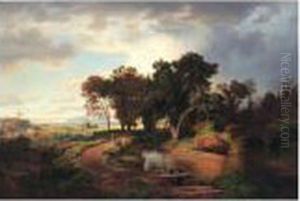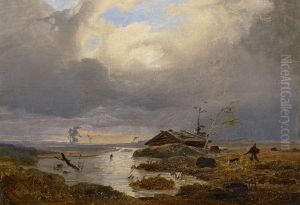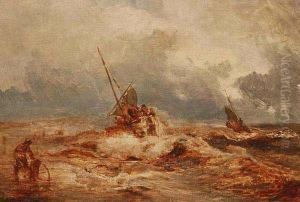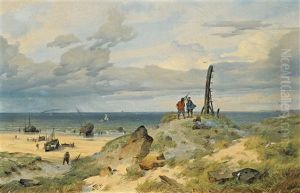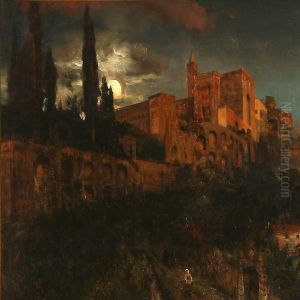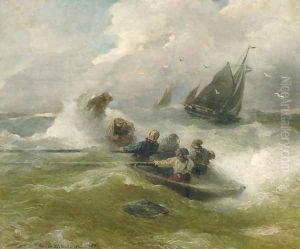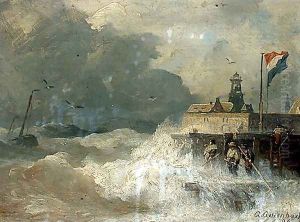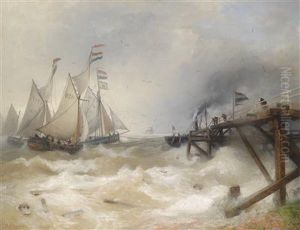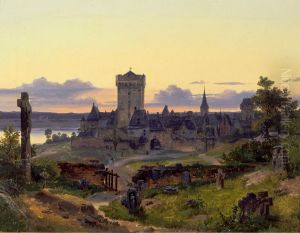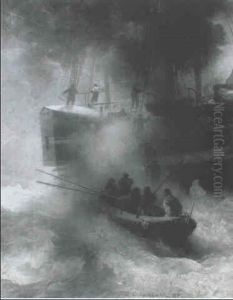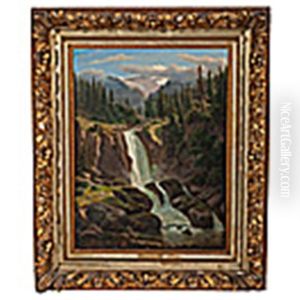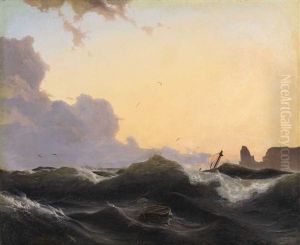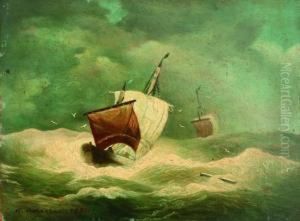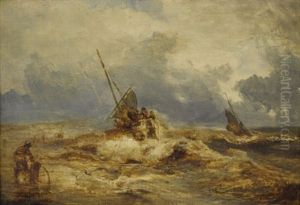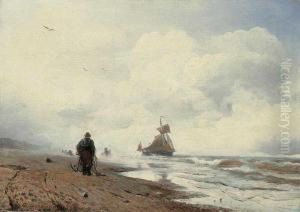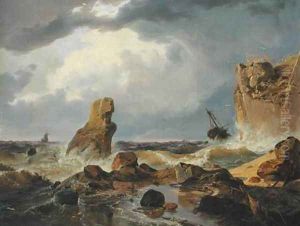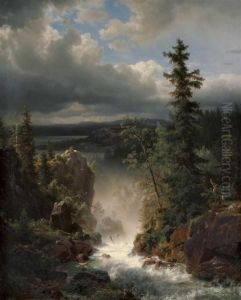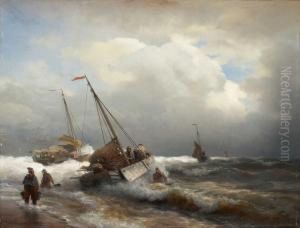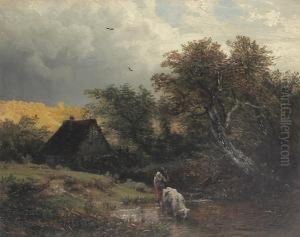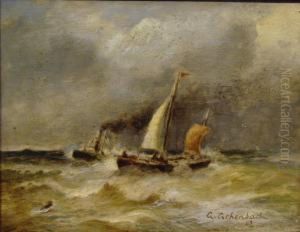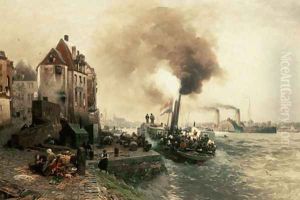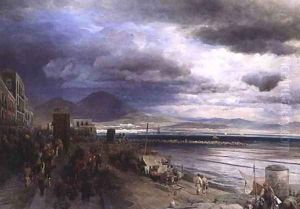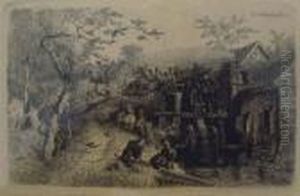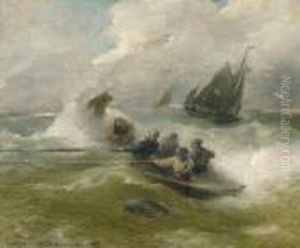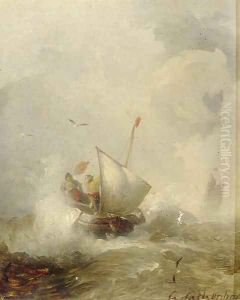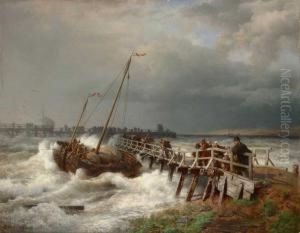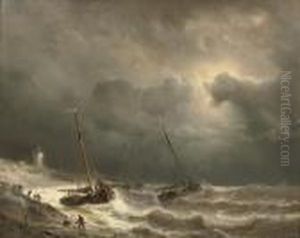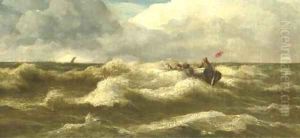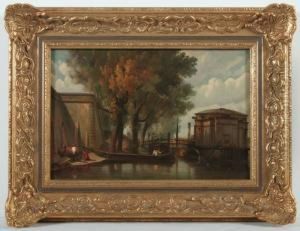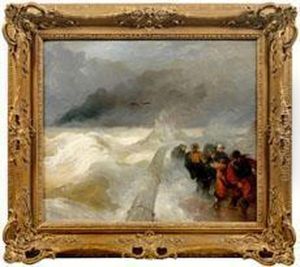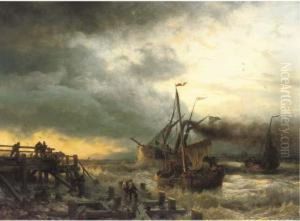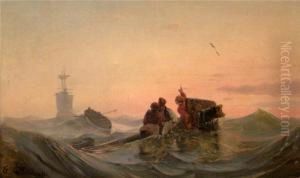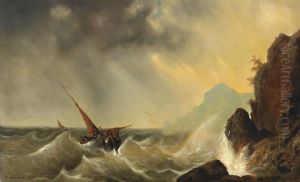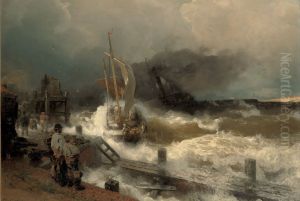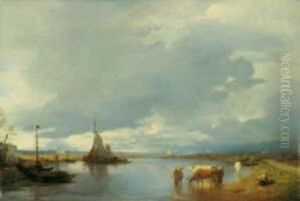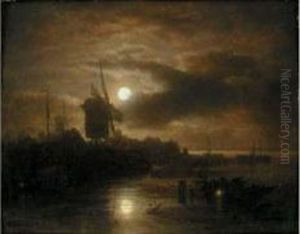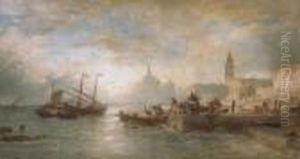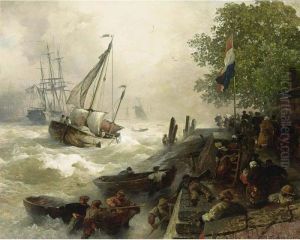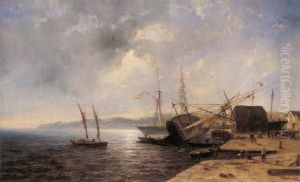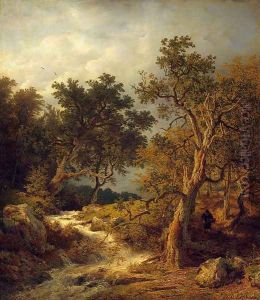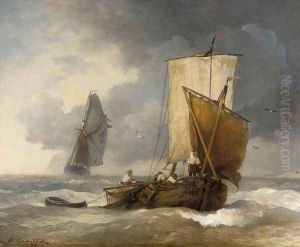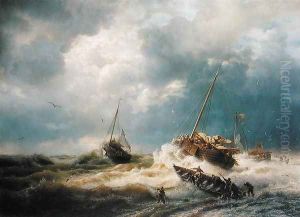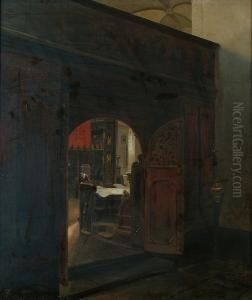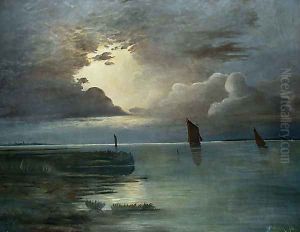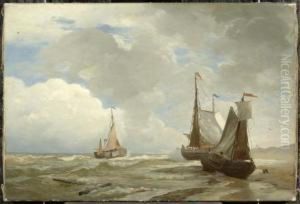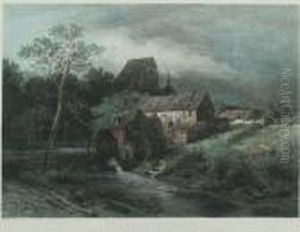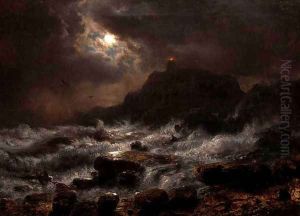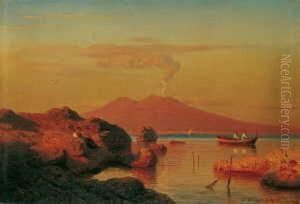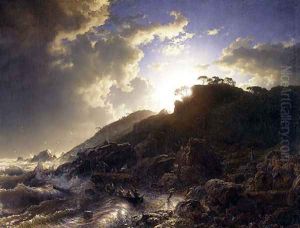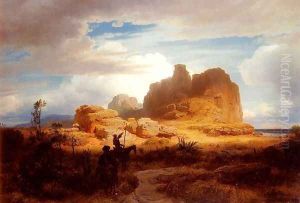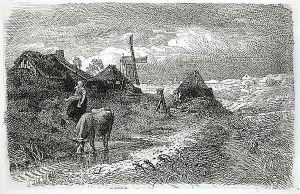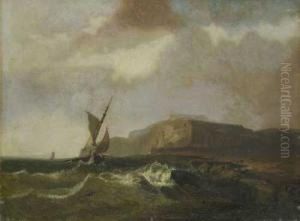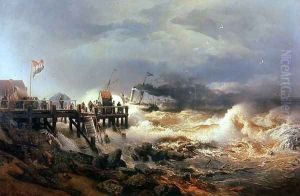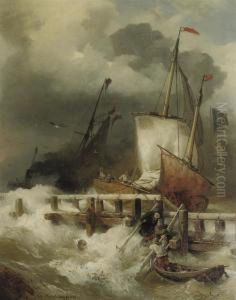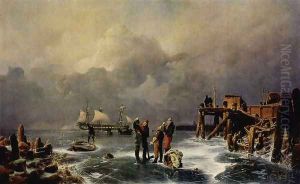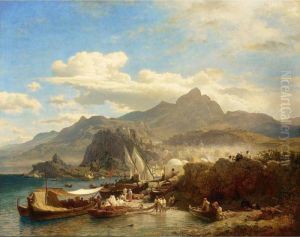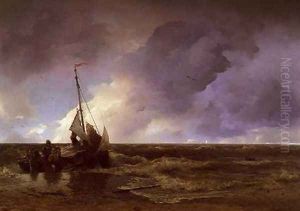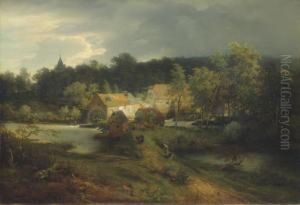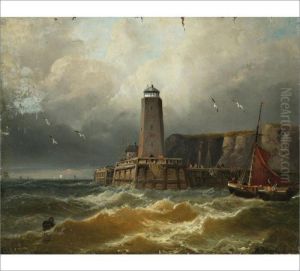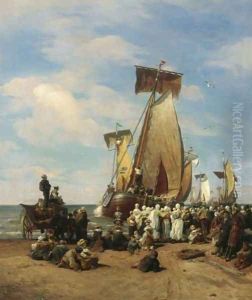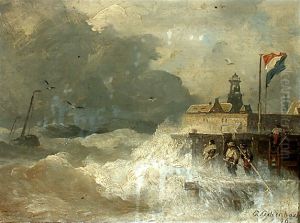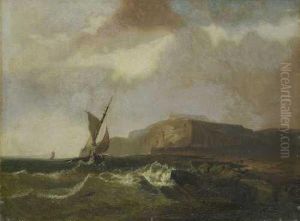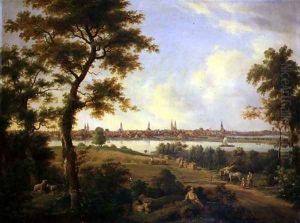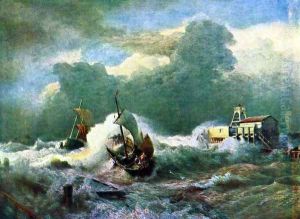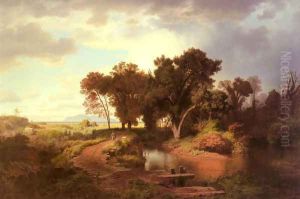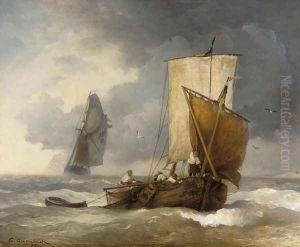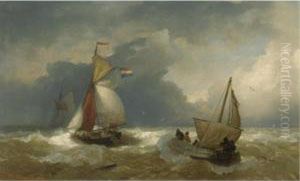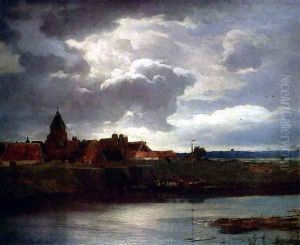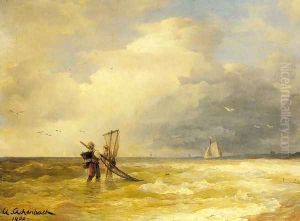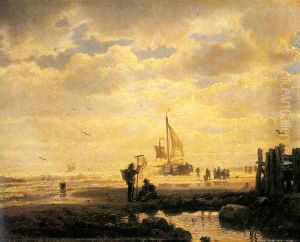Andreas Achenbach Paintings
Andreas Achenbach was a German landscape painter, born on September 29, 1815, in Kassel, Germany, into a family of artists. His younger brother, Oswald Achenbach, would also become a renowned painter. Andreas showed artistic talent at a very young age and received his initial training from his father, Hermann Achenbach, who was a painter himself. He later continued his education at the Düsseldorf Academy, one of the leading art schools in Germany at the time, where he was influenced by the works of Johann Wilhelm Schirmer and Carl Friedrich Lessing.
In the 1830s, Achenbach developed his style, which can be categorized as part of the Düsseldorf school of painting, a group known for its meticulous and detailed landscapes. He became particularly well-known for his seascapes and depictions of storms and shipwrecks, which were marked by dramatic lighting and naturalism. His early works often showed German forest landscapes, but as he traveled more, he started painting marine scenes and coastal landscapes. His travels took him to Norway, the Netherlands, Italy, and along the North Sea and Baltic Sea, and these journeys significantly influenced his subject matter.
Andreas Achenbach's paintings were characterized by a romantic approach to nature, yet he also aimed for realistic representation. He meticulously studied weather phenomena and the effects of light on the landscape, which is evident in his dynamic and atmospheric compositions. Achenbach was skilled in both oil and watercolor, and he worked with a variety of subjects beyond maritime scenes, including architectural studies and still lifes.
Throughout his career, Achenbach was a successful artist, and his works were sought after by collectors and patrons. He received numerous awards and honors, including an appointment as a royal court painter. His influence extended through his teaching at the Düsseldorf Academy, where he guided a new generation of landscape painters.
Andreas Achenbach's artistic legacy is preserved in many museums and galleries around the world. He passed away on April 1, 1910, in Düsseldorf. His contributions to landscape painting and his role in the Düsseldorf school have made him a significant figure in the world of 19th-century art.
